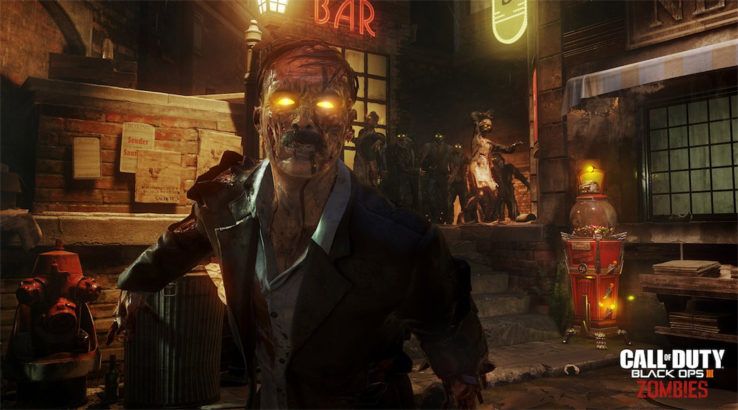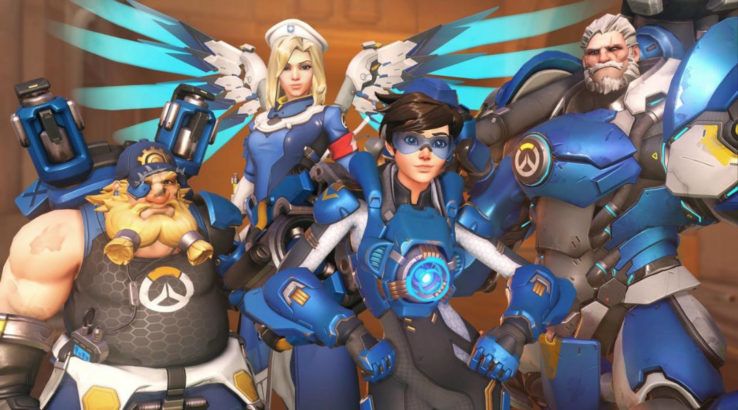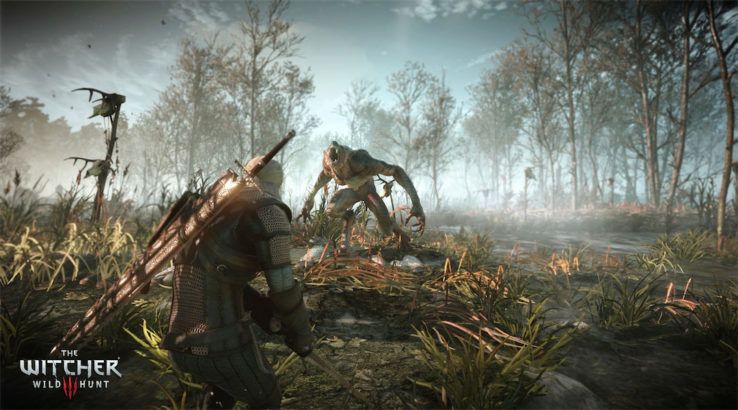Over the course of the last two decades, the gaming industry has seen significant shifts in how video games are created and played. Thanks to improvements in technology and graphics, games have better, more realistic visuals. Thanks to the growth and expansion of the internet, gamers can now play in real time with friends and strangers from around the globe.
More recently, there’s been a shift in the way video game developers collect revenue: namely DLCs and microtransactions. In fact, despite the negative rap many gamers hold toward microtransactions, there’s no denying it’s an effective means of income for video game companies.
This shift has been so lucrative, in fact, that this Game Rant writer believes it will be an integral part of the future of gaming. The last few years have taught us that gamers have high expectations for video game developers, to the point that even a minor flaw in an otherwise stellar game can spell disaster for a game’s potential sales. This changing mindset among gamers has led to new practices by the gaming industry that will forever change the future of gaming.
It is my opinion, that over the next five to ten years, the practice of microtransactions will continue to expand. In fact, it’s my belief that the future of video games will be paid or free core titles, regular free DLC updates, and paid microtransactions. This pattern will ensure game developers rake in the necessary revenue, while providing fresh, new content to gamers on a regular enough basis that they’ll continue to play each game long into the future.
The Lessons of Halo 5: Guardians
One of the most interesting case studies in the gaming industry right now is Halo 5: Guardians, and more particularly the way 343 Industries has handled new content and microtransactions.
In a recent episode of Pachter Factor, Michael Pachter reveals some interesting information he learned while visiting 343 Industries. He explains how rather than charge for both the DLC and microtransaction items, 343 Industries instead opted to release DLC maps, game modes, armor, and weapons for free every month for all players, and only charge for the various cosmetic items via in-game purchases.
The end result of this strategy was that 343 Industries made more during the first six months of Halo 5 from microtransactions that it did from any previous game made through DLC. When asked why that was the case, 343 Industries revealed that whenever they did a paid DLC, they would lose half the paying audience each DLC offering. Only half of those who purchased the core game would buy the first DLC, and only half of those who purchased the first paid DLC would buy the second paid DLC, and so on. In the end, the company was losing buyers with each iteration of DLC.
Thanks to this new direction of free DLC and paid microtransactions, 343 Industries has unlocked a revenue stream that not only stays steady, but provides greater income than the traditional method of charging for each DLC. This kind of success cannot be overlooked by other gaming companies. In fact, this is essentially the direction I believe the gaming industry will be going in the future.
The Curious Case of GTA Online
When Grand Theft Auto 5 was released a few years ago, many gamers and critics praised the game for its storytelling, open world, compelling characters, and exciting gameplay. But it was the release of GTA Online shortly thereafter that ultimately brought massive success for Rockstar Games.
Since the day it was released, Grand Theft Auto 5 has consistently been one of the best selling games every month and year around the globe. While the first-person campaign is certainly stellar, it’s not the reason the game has shipped more than 75 million copies worldwide. That award goes to GTA Online, and it’s thanks to the consistent, regular free content Rockstar Games has released for GTA Online.
Similar to 343 Industries, Rockstar Games has opted to release new, enjoyable content for GTA Online for all players, no payment required. And these aren’t just weapon skins; these are full-fledged experiences, from new racing tracks and modes, to entirely new co-op adventures like biker gangs. The result of Rockstar’s direction for GTA Online has been half a billion dollars in revenue from GTA Online’s microtransactions. That’s more than many video games make from initial sales and paid DLC combined.
This kind of success is nothing to scoff at, and is actually a great example of how well-executed free DLC and paid microtransactions can elevate a single video game to a revenue powerhouse.
Growing Trend in the Gaming Industry
Halo 5 and GTA Online aren’t the only entities having success with microtransactions. Titles like H1Z1: King of the Kill, Counter Strike: Global Offensive, Overwatch, and the Call of Duty franchise all implement microtransactions with great success. Each is a prime example of how simple, in-game offerings give gamers a chance to spend money, but doesn’t require payment for gamers to enjoy the various game modes and maps a title has to offer.
There’s also been a trend on the other side of the coin. Numerous game developers and publishers have faltered greatly when it comes to paid DLC, likely costing them money and players at the expense of poorly-executed DLC releases. Two recent examples include Tom Clancy’s The Division and Ghost Recon Wildlands.
It’s well-known that The Division has had its share of problems, but the game has still found considerable success over the last year. That said, gamers have repeatedly pointed out that the release of new game modes for The Division weren’t what many would consider quality DLC or “expansion” content. Rather than providing an expansion on the story, Massive Entertainment and Ubisoft opted to release new game modes that utilized The Division’s core elements. The end result is that described by 343 Industries, where each successive expansion likely makes much less than the one before it.
There’s also the example of Ghost Recon Wildlands. After a respectable release, Ubisoft released the game’s first DLC to a heavily negative reception. Once again, rather than expanding on the game’s story, Ubisoft introduced new game modes with vehicles and color schemes that seemed contrary to the game’s core ambiance. The end result is many gamers complaining online about the game’s future, and wishing they hadn’t purchased the Season Pass.
The End of the Season Pass
With the challenge of falling revenue with each successive DLC, game developers have created a simple method of collecting gamers’ money before they even release a game’s DLC: the Season Pass. Essentially, gamers cough up the cash for each DLC, with a small discount, prior to the release of said DLC, and often before the game itself is even launched to the world.
While this practice sounds lucrative for game developers, it’s been faltering in recent years. As more game developers release DLC that doesn’t meet gamer expectations, the community of gamers has become largely disenfranchised with the idea of a Season Pass.
To counter the growing distrust from gamers, developers have started padding their Season Passes with exclusive content that cannot be obtained any other way besides purchasing the Season Pass. While this has undoubtedly been successful, there’s still a growing sense of distaste for Season Passes within the gaming industry.
Gamer Expectations
There are two important aspects to gamer expectations that will be carefully considered by game developers going forward. The first is gamer expectation about what constitutes a good paid DLC. Thanks to developers like CD Projekt RED, gamer expectations for game DLCs have been elevated.
Many gamers consider both DLCs for CD Projekt RED’s The Witcher 3: Wild Hunt to be so large and expansive, that they could be entire games on their own. With this mindset among gamers, it’s getting harder for other developers to release small amounts of DLC and expect gamers to spend as much on their content as they do on CD Projekt RED’s.
When DLC is free, on the other hand, gamer expectation is much lower. In fact, any free content is usually well appreciated among the gaming community, even if it’s fairly insignificant. When gamers get new, fresh experiences in their favorite games without having to pay for it, there’s a feeling that the developer cares for the community and wants to “give back” to show appreciation for gamer loyalty. As described previously with Halo 5 and GTA Online, despite a game’s flaws, free content is a good way to keep gamers active and engaged, and to build loyalty and advocacy within the community.
The other gamer expectation worth noting has to do with microtransactions. As microtransactions have become more mainstream, gamers have come to expect them in nearly any game they purchase. So long as the microtransactions don’t create a pay-to-win scenario, gamers have become more accepting of the practice.
The result of this is that developers can now freely add microtransactions into their games, without worrying about too much gamer backlash in return. This is especially true when said developers offer free DLC content on a regular basis. Gamers will be more willing to forgive small DLC mishaps, and in many cases will even spend some money on microtransactions in an effort to “support the developer.” In the end, developers make more money, and gamers are happier.
The Future of Gaming: Free DLC and Paid Microtransactions
Five years ago, EA’s Peter Moore predicted that “in five to 10 years,” games would be free-to-play, and developers would rely on microtransactions for revenue. Now five years into that prediction, it seems the gaming industry is right on schedule.
The one change I would make to that prediction is that the core games will likely still run gamers the usually price, at least for the most part. However, when it comes to DLC, it won’t be long before developers recognize the benefit of free DLC and paid microtransactions, and update their business practices accordingly.








